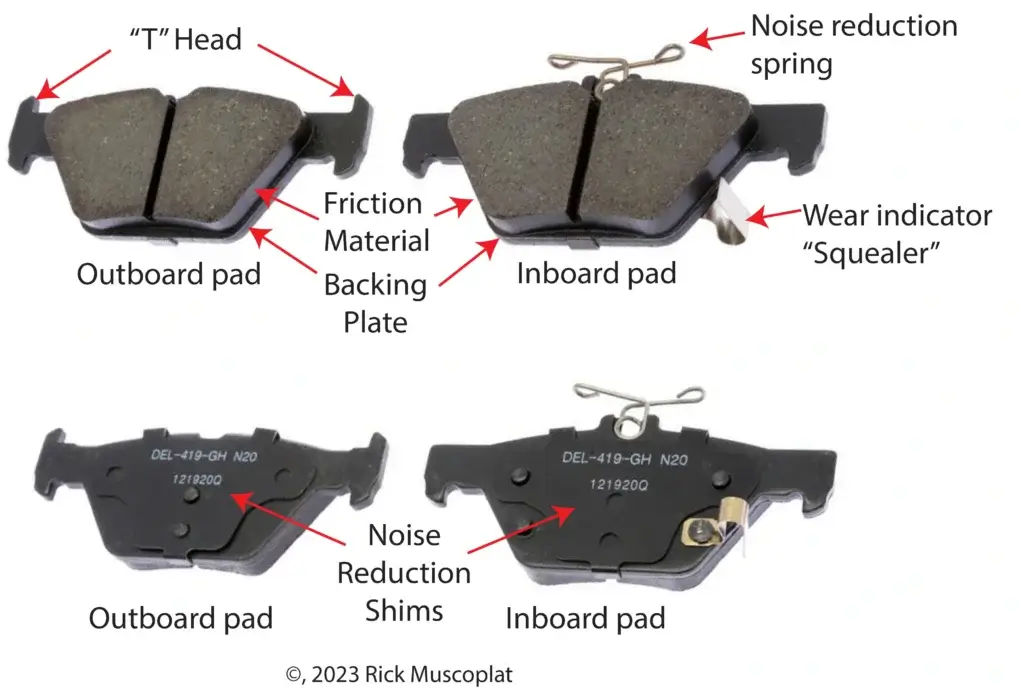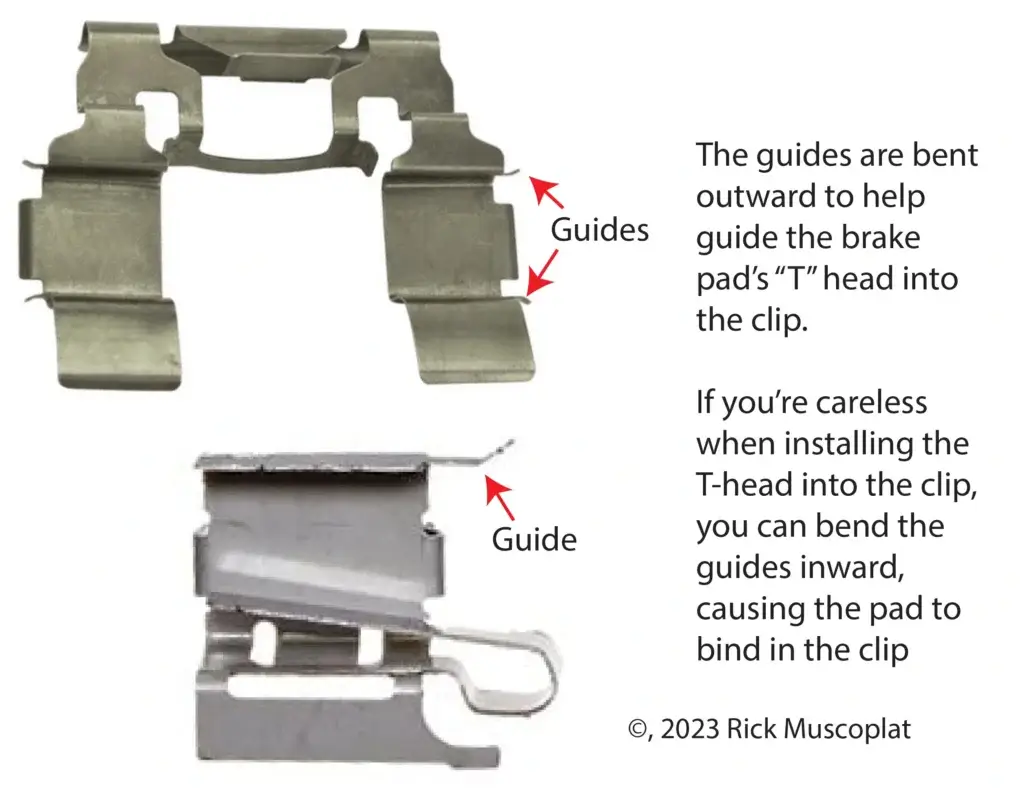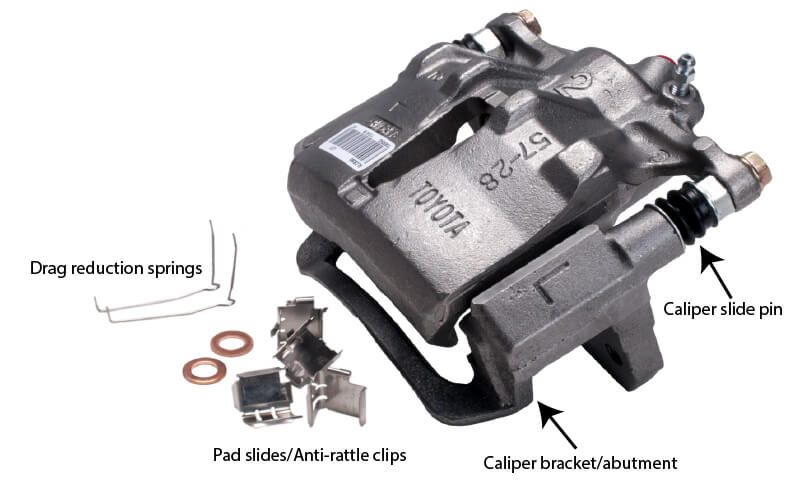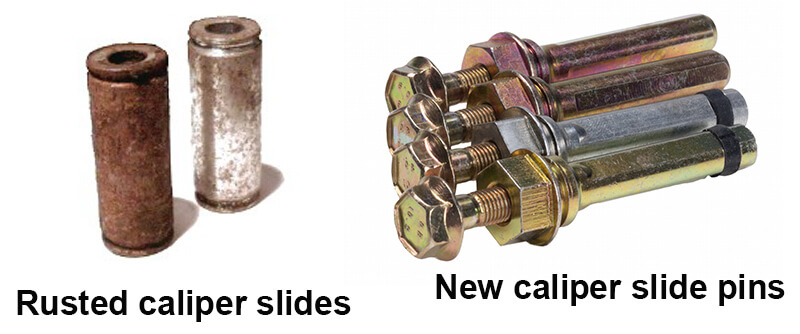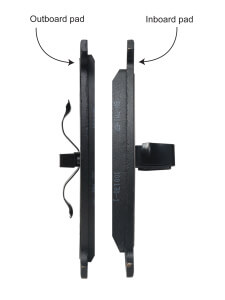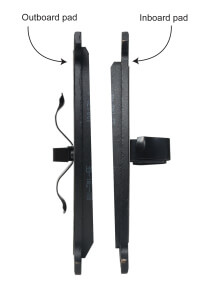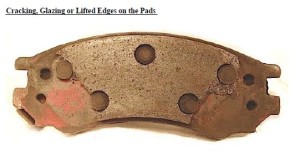Uneven brake pad wear causes
What causes uneven brake pad wear
Most common causes of uneven Brake Pad Wear Patterns
First, let’s get out terminology straight:
The inboard pad is the pad that’s PUSHED against the rotor by the caliper piston. When you apply the brakes the caliper piston pushes the inboard pad against the brake rotor. On a floating caliper, the inboard pad hits the rotor and can’t move any more and that’s the end of it’s travel
The outboard pad on a floating caliper brake system is the pad that’s PULLED against the rotor by the outboard fingers of the caliper.
Brake pad anatomy
Brake anti rattle clip anatomy
What causes inboard brake pad wear?
Here’s a situation where the inboard pad is worn more 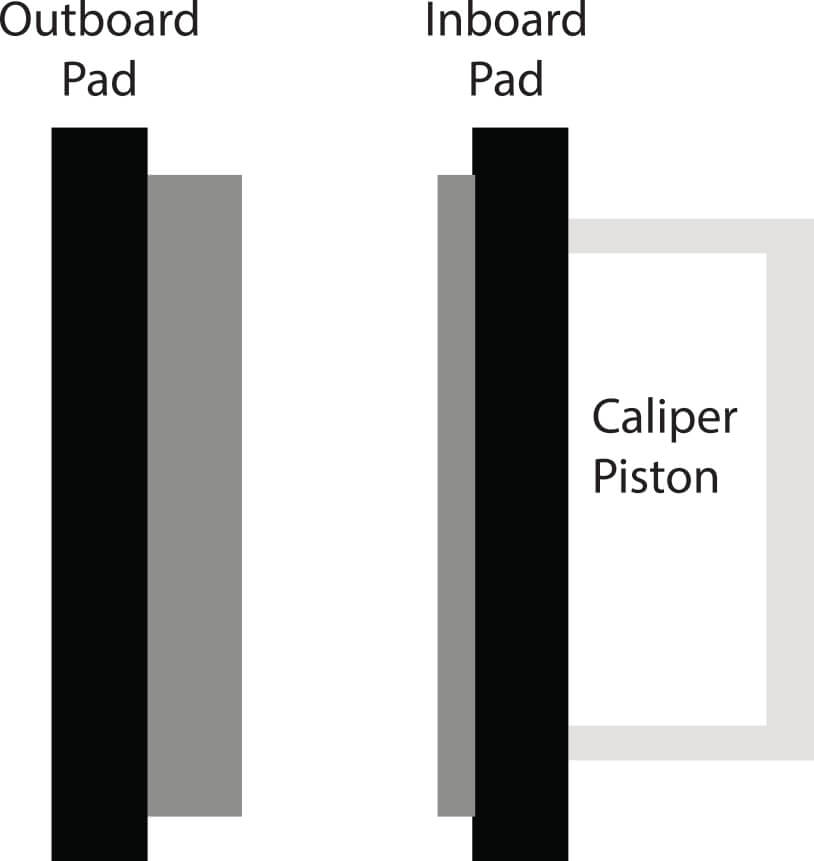 than the outboard pad, but the worn friction material isn’t tapered. The friction material thickness is approximately the same on the left/right and top/bottom of the worn pad. The following items can cause this kind of inboard pad wear:
than the outboard pad, but the worn friction material isn’t tapered. The friction material thickness is approximately the same on the left/right and top/bottom of the worn pad. The following items can cause this kind of inboard pad wear:
#1 cause of inboard pad wear
• The caliper slide pins are seized/binding, preventing the caliper from returning to its relaxed position
#2 cause of inboard pad wear
#3 cause of inboard pad wear
• The caliper piston is not returning to its rest position caused by a hardened/binding square-cut O-ring in the caliper. So the caliper piston stays extended and continues to press the inboard pad against the rotor.
#4 cause of inboard pad wear
• The piston dust boot is torn or binding, preventing the piston from returning to the rest position.
#5 cause of inboard pad wear
• The master cylinder or flexible brake hose is maintaining pressure on the fluid to the caliper. Check for residual brake pressure after releasing the brake pedal.
How to fix inboard pad wear
1)Check the caliper slide pins for ease of movement, signs of corrosion or binding. Replace any corroded slide pins. Replace all rubber caliper pin boots and pin noise dampeners (included with the boot kit).
2) Clean rust off the inboard pad abutment area and apply a thin film of dielectric high temperature brake grease on the abutment BEFORE installing new anti-rattle clips. The grease will reduce rust and prevent rust jacking. Then apply a very thin film of dielectric brake grease to the top of the anti-rattle clips
3) Check for residual brake fluid pressure that’s preventing the piston from returning to its rest position.
What causes outboard brake pad wear?
The following items can cause outboard pad wear:
#1 cause of outboard brake pad wear
The caliper body isn’t releasing clamping pressure on the outboard pad due to corroded or seized caliper guide pins.
SOLUTION:
Clean and lubricate caliper guide pins with high-temperature synthetic brake grease. Replace corroded pins.
What causes tapered brake pad wear
The following items can cause tapered pad wear:
#1 cause of tapered brake pad wear
The brake pad is binding in the abutment area. This is almost always caused by rust buildup on the caliper bracket or abutment that prevents proper movement of the brake pads. The binding prevents one end of the brake pad from sliding and keeps the opposite side in contact with the rotor.
SOLUTION:
Double-check the pad fitment. Remove the pads and check for corrosion on the ends of the pad backing plate. Check for debris wedged in the pad slide area. Correct the condition and replace the pads. Clean corrosion off the abutment area with a wire brush and apply a light film of high-temperature brake grease to slow down future corrosion
#2 cause of tapered brake pad wear
Improper installation of the anti-rattle clips. Some anti-rattle clips are orientation specific.
Possibility #2
One caliper guide pin is worn or seized or the rubber guide pin bushing has deteriorated. Either condition would cause the caliper to cock during application and apply uneven pressure to the pads.
SOLUTION:
Check the guide pins and rubber bushings for wear, corrosion, incorrect lube, or lack of lubrication. Replace cracked or deteriorated rubber bushings. Install new guide pins and lubricate with high-temperature synthetic brake grease.
What causes brake pads to crack?
#1 cause of broken brake pad friction material — rusted backing plate
The most common cause of cracked or missing friction material is poor quality backing plate steel that has rusted, thereby breaking the adhesive bond between the friction material and the backing plate.
When steel corrodes, the rust blooms expand and exert outward pressure on the friction material. The friction material is glued to the backing plate and cannot withstand the pressure. So the friction material is “rust jacked” away from the backing plate. Once that happens, brake pressure caused the friction material to crack and fall off.
For more information on steel backing plates, see this post
#2 cause of broken brake pad friction material — backing plate flex
The second most common reason for broken or missing friction material is a cheap steel backing plate that flexes during braking. Cheap brake pads are made inexpensive steel backing plates that are too thin for the application. Since pressure is only applied to the center of the backing plate, the outer edges flex, causing the friction material to crack off.
#3 cause of broken friction material — overheating
The third most common cause of this condition is thermal distress caused by improper installation, driver overuse of brakes, residual pressure in the hydraulic system, or improper adjustment or operation of the parking brake.
Backing plate corrosion
Corrosion on the backing plate has destroyed the glue bond between the plate and the friction material and the “rust jacking” has lifted the friction material up from the plate, where it breaks off. Buy better quality brake pads.
Backing plate flex
The backing plate is too thin for the application and has flexed while braking causing the edges to lift off the backing plate and break off. Buy better quality brake pads
©, 2015 Rick Muscoplat
Posted on by Rick Muscoplat

